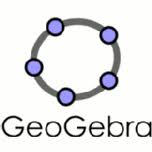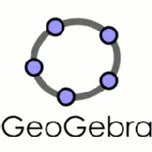| 我們致力本地化我們在盡可能多的語言的網站越好,然而這一頁是機器使用谷歌翻譯翻譯。 | 關閉 |
-
-
產品
-
資源
-
支援
-
公司
-
登入
-
.ggb 文件擴展名
開發商: GeoGebra文件類型: GeoGebra Document你在這裡因為你有,有一個文件擴展名結尾的文件 .ggb. 文件與文件擴展名 .ggb 只能通過特定的應用程序推出。這有可能是 .ggb 文件是數據文件,而不是文件或媒體,這意味著他們並不是在所有觀看。什麼是一 .ggb 文件?
該.ggb文件擴展用於通過使用GeoGebra應用創建的文件。這個應用程序是一個數學的應用程序,因為它是與數學題目,如代數,微積分,幾何等數學這個應用程序的目的是教育用戶,尤其是學生,當它涉及到的數學方程,他們發現很難解決。這個程序可以讓他們輕鬆解決方程和製造出任何的數學活動,他們被告知的事情。在幾何形狀,用這個軟件可以讓他們輕鬆輕鬆工藝線,角度和其他數學相關的圖紙。這使得數學作業更容易完成。保存使用該應用程序使用的全部通過GeoGebra創建這些文件,幾何文件,代數文件或任何文件.ggb文件擴展名,因此,認定為.ggb文件。這個文件的擴展名可以很容易地在地理格式顯示的數據。這些.ggb文件可以打開使用GeoGebra的應用程序,但像LaunchAnywhere和Java Web Start的啟動程序也可以打開.ggb文件。如何打開 .ggb 文件?
推出 .ggb 文件,或者你的電腦上的任何其他文件,雙擊它。如果你的文件關聯的設置是否正確,這意味著應用程序來打開你的 .ggb 文件將其打開。這是可能的,你可能需要下載或購買正確的應用程序。這也有可能是你有正確的應用程序在PC上,但 .ggb 文件還沒有與它相關聯。在這種情況下,當您嘗試打開一個 .ggb 文件,你可以告訴Windows的應用程序是正確的該文件。從這時起,打開 .ggb 文件將打開正確的應用程序。 點擊這裡修復.ggb文件關聯錯誤打開一個應用程序 .ggb 文件
 GeoGebra for MAC
GeoGebra for MACGeoGebra for MAC
GeoGebra for Mac is an interactive mathematics software for free. The aim of this software is to connect numeric, geometric and algebraic representations in an interactive approach. You can construct mathematical representations using geometric objects, figures, text, animations, scripting and other functions. You can directly enter and control coordinates and equations. You can work with sliders, create plots and define points in a path or region to determine parameters. You can find perform powerful commands and look for derivatives such as sequence or root. GeoGebra constructions are built using objects, tools, functions, expressions and commands provided by the software. The main window is divided into two default views, Algebra View on the left and Graphics View on the right. Above these views are the Menubar and the Toolbar. You can place Navigation Bar below the two. You can use keyboard shortcuts to use features, or accessibility features like virtual keyboard. Menus include File, Edit, View, Options, Tools, Window and Help. There are 4 types of views: Algebra, CAS, Graphics and Spreadsheet. Dialogs include Properties, Construction, Tool Creation, Tool Manager, Redefine, Options, Export Graphics, Export Worksheet and Print Preview. You can publish your work online at GeoGebraTube. You can print your GeoGebra works together with the Construction Protocol. Your image files can be saved in different formats. GeoGebra for Mac requires PPC/INTEL, Mac OS X 10.4 or later. GeoGebra for Linux
GeoGebra for LinuxGeoGebra for Linux
GeoGebra is an open-source mathematics application used in schools that combines dynamic algebra, geometry and calculus. It is written in Java and available on multiple platforms. You can create dynamic constructions using the tools and objects in GeoGebra. Geometric objects include lines and axes, points and vectors, functions, curves, inequalities, conic sections and arcs. Lists of points, loci, lines, arcs, polygons, conic sections, functions, intervals and single variable equalities are called paths. Lists of other paths are paths, too. You can define the point belonging to a path using Point Command. Each point on the path has path parameter ranging from numbers 0 to 1. You use the PathParameter Command to determine this parameter. You can also define a point to a region [arc, conic, polygon, two variable inequalities] using Pointln Command or Point on Object Tool. General objects are numbers and angles, Boolean values, complex numbers, lists, matrices, images and texts. Action objects are useful in making interactive worksheets with scripting. They are: checkboxes> graphical representations of Boolean values; input boxes> text inputs for scripts; buttons> trigger scripts when clicked; comboboxes>only available in Spreadsheet View, a combination of buttons and checkboxes in Speadsheet Tab. Object properties include visibility, fixed objects that cannot be moved, deleted or redefined, filling [standard, hatch, image] and advanced features such as conditional visibility, layers and dynamic colors. There are 3 types of objects in GeoGebra: free objects> do not depend on other objects for position or value; dependend> depend on other objects; auxiliary> defined by user or created by specific tools. You can make labels and captions, change values, select and name objects, do automatic or manual animation of numbers, angles and points. Repetition of an animation cycle could be increasing, decreasing or oscillating [alternate between increasing and decreasing]. You can also do tracing and scripting using JavaScript and GGBScript.提醒一句
要小心,不要重命名擴展 .ggb 文件,或任何其他文件。這不會更改文件類型。只有特殊的轉換軟件可以從一個文件類型更改一個文件到另一個。什麼是文件擴展名?
文件擴展名是一組三個或四個字符在文件名的末尾,在這種情況下, .ggb. 文件擴展名告訴你它是什麼類型的文件,並告訴Windows哪些程序可以打開它。窗戶經常關聯一個默認程序的每個文件的擴展名,這樣,當你雙擊該文件,程序會自動啟動。當該程序不再是您的PC上,有時可以得到一個錯誤,當您試圖打開相關的文件。發表評論

